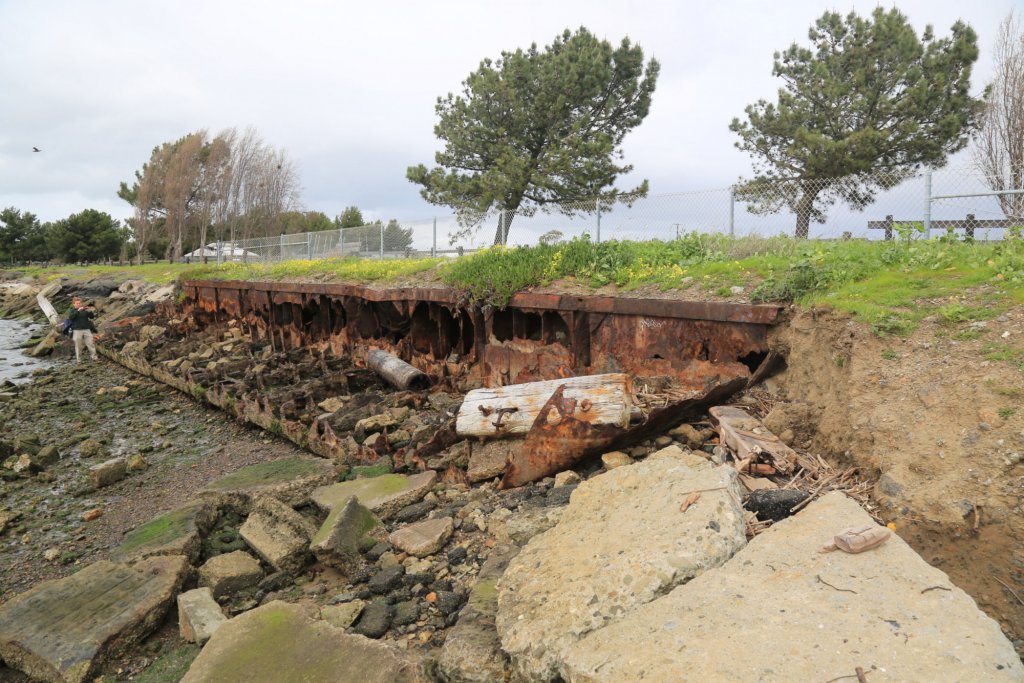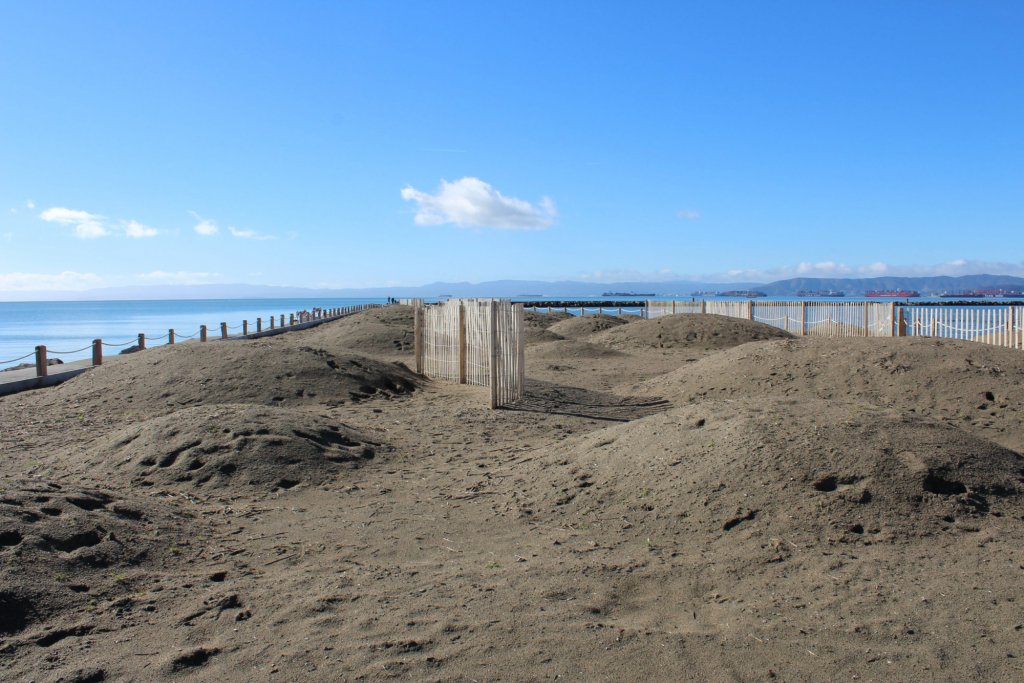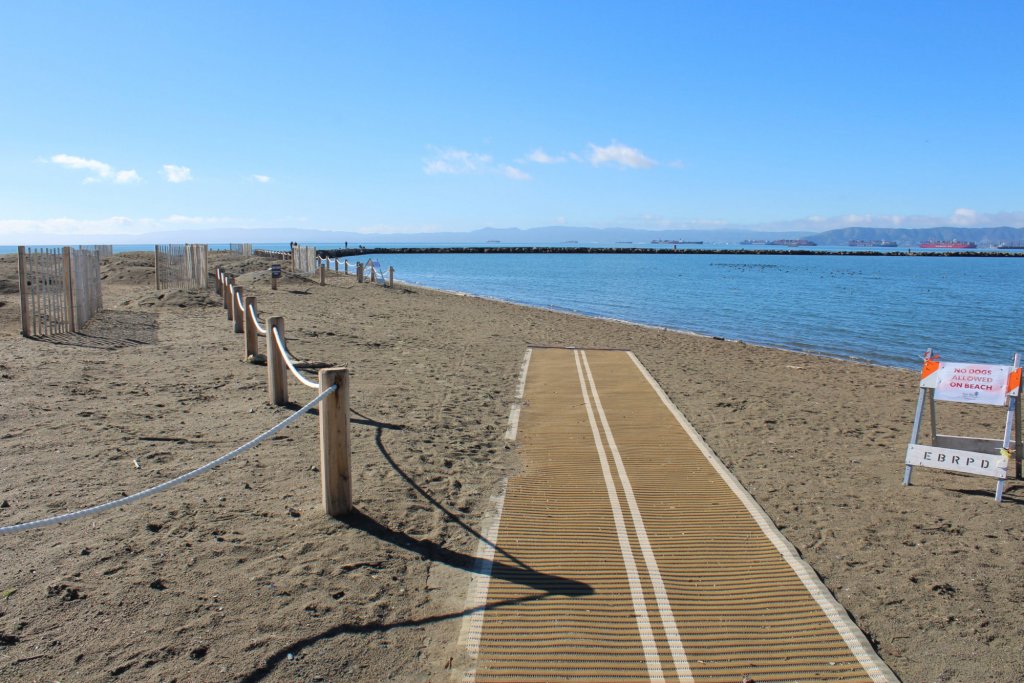Alameda’s Encinal Beach Provides Restored Dune Habitat and Recreation Enhancements
Poking out from the coastline, Encinal Beach in Alameda is bringing awareness of sensitive coastal habitats to Bay Area visitors. The park is a local favorite, providing recreational opportunities and public beach access, and serving as one of the limited launch sites for non-motorized watercraft in the area. Once a derelict shoreline of rusted metal and invasive iceplant, this 2-acre postage-stamp park is now a restored shoreline habitat thanks to the East Bay Regional Park District. WRA served as prime consultant and led the dune restoration and trail/landscaping improvements, environmental review, regulatory permitting, and construction oversight. Supporting the project, Moffatt and Nichol designed the shoreline protection and beach nourishment aspects of the project and Power Engineering served as the contractor. The park will boast native plants, a safe and stabilized shoreline, restored dune habitat, and improved beach access year-round.
Prior to construction, an old rusty barge stood in place of proper shoreline stabilization. In place since the 1940s, the exposed metal was both a serious safety concern for beach-goers and an insufficient method of preventing shoreline erosion in the face of sea level rise. In addition, the bayside walking trail was ready for resurfacing, and the Park District wanted to update existing benches, fences, and informational signs. Removal of industrial debris near the barge was also a priority for the Park District. Invasive iceplant covered the dune area, preventing the proliferation of hardy, native species.
The park is a popular local spot for fishing, kayaking and other recreational water sports, but the beach had been steadily eroded by wave action over time. Only a narrow strip of sand was accessible at high tide, severely limiting recreational activities. In designing the dune habitat and public access features, the Park District wanted to focus on creating a natural space for education and recreation, where these activities could be enjoyed to the fullest.
Construction
The contractor kicked off the project with the careful removal of the rusty barge and debris from the shoreline. Once removed, the steep shoreline was stabilized with rock and cobble revetment to prevent further erosion. The size and shape of the revetment was determined based on the slope of the shoreline, unique topography, and wave action of the area.
Next, iceplant covering the dunes was completely removed and the beach and dunes were regraded. To raise the elevation of the beach and increase accessibility year-round, sand was imported and carefully placed on the beach. The narrow beach was only exposed at low tide, and the construction crews timed the beach nourishment work to correspond with the tidal changes.
In the dune area, circular mounds, or “hummocks”, of varying sizes were constructed to create habitat for dune wildlife and plant species. In natural dune habitats, finer sand is deposited on the dunes, carried further up the beach by the wind. To mimic this natural process, finer sand particles were used in dune construction, whereas coarser particles were used to replenish the sand on the beach. To mitigate sand loss from the wind, fences were strategically placed around the dunes to trap and anchor sand, thereby preventing erosion.
Following the construction of the hummocks, native plants including pink sand verbena (Abronia umbellata), beach bur (Ambrosia chamissonis), beach evening primrose (Camissoniopsis cheiranthifolia ssp.), saltgrass (Distichlis spicata), beach saltbush (Atriplex leuophylla), California poppy (Eschscholzia californica), and beach blue lupine (Lupinus chamissonis) were seeded throughout the area. Additional native plant species and trees such as coast live oak and radiant manzanita were planted adjacent to the dunes, greatly improving the overall aesthetics of the park.
New amenities for visitors
Visitors to the park can now enjoy the newly resurfaced Bay Trail, interpretive signage, and benches throughout the 2-acre area. In addition, a newly-installed sand mat improves access from the walking path to the beach.
WRA extends our appreciation to Park District and our project partners for the opportunity to support this important restoration and public access project. Open natural spaces are a real benefit to communities during the pandemic, and this park will serve generations to come.







